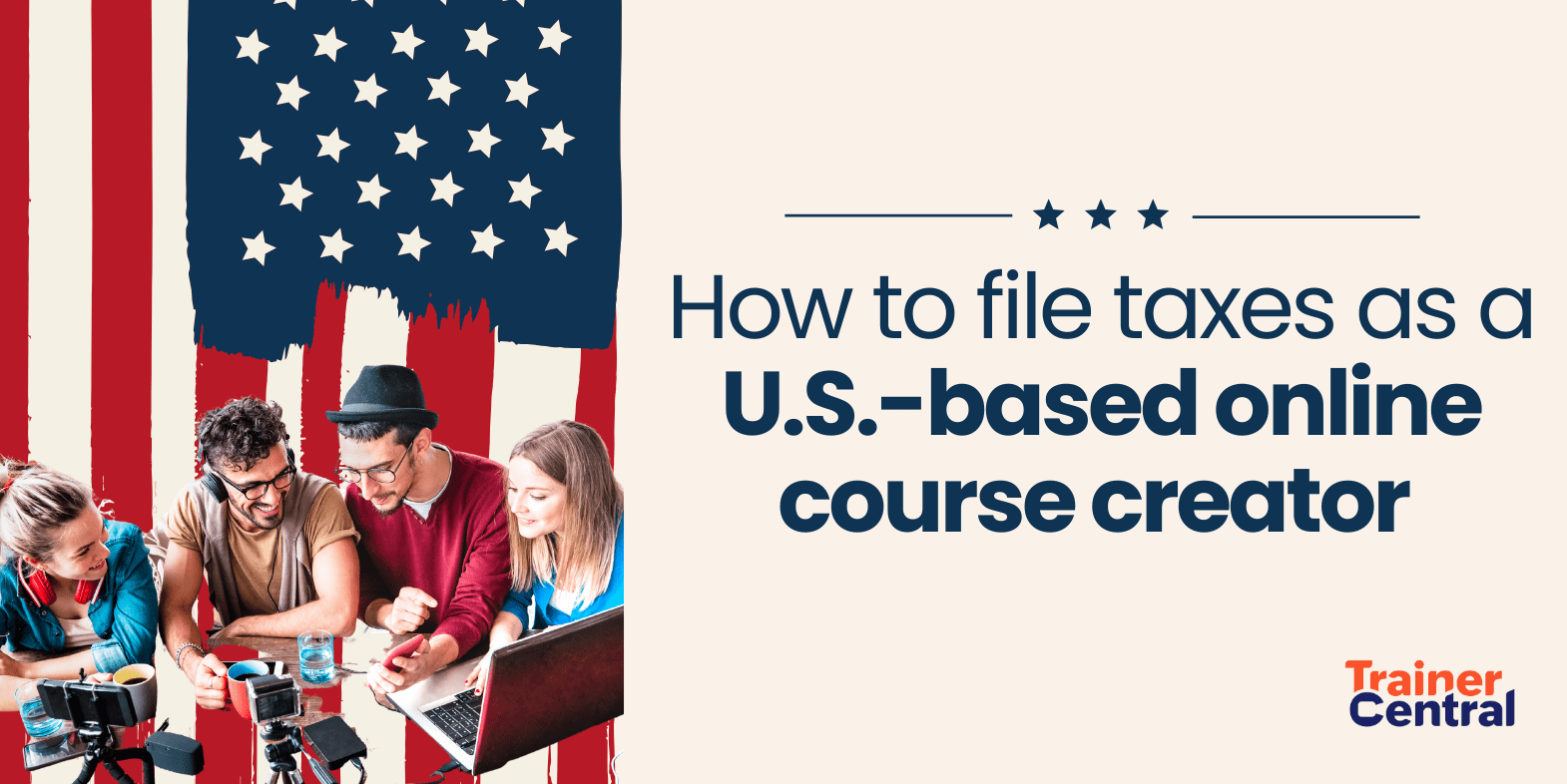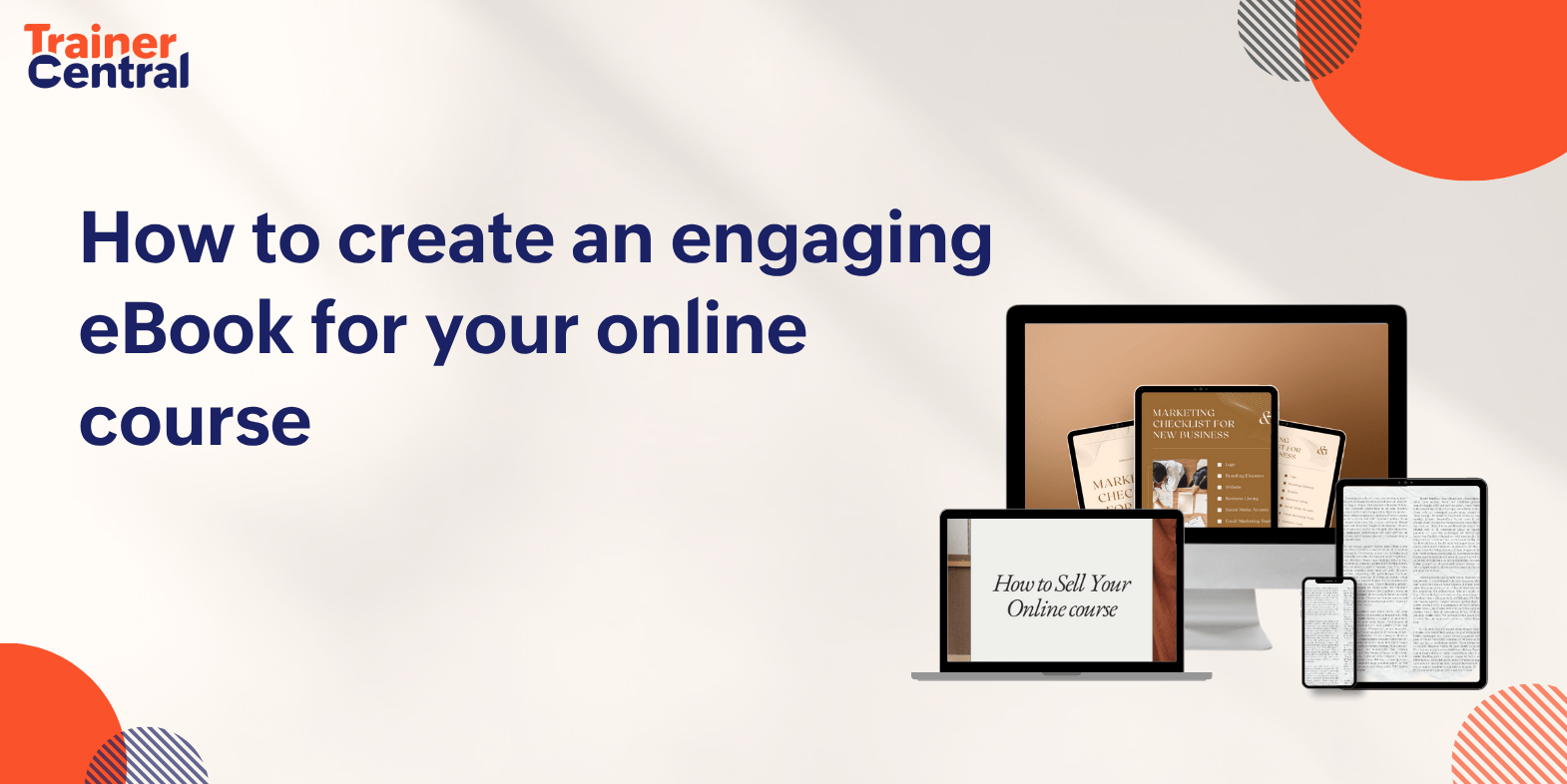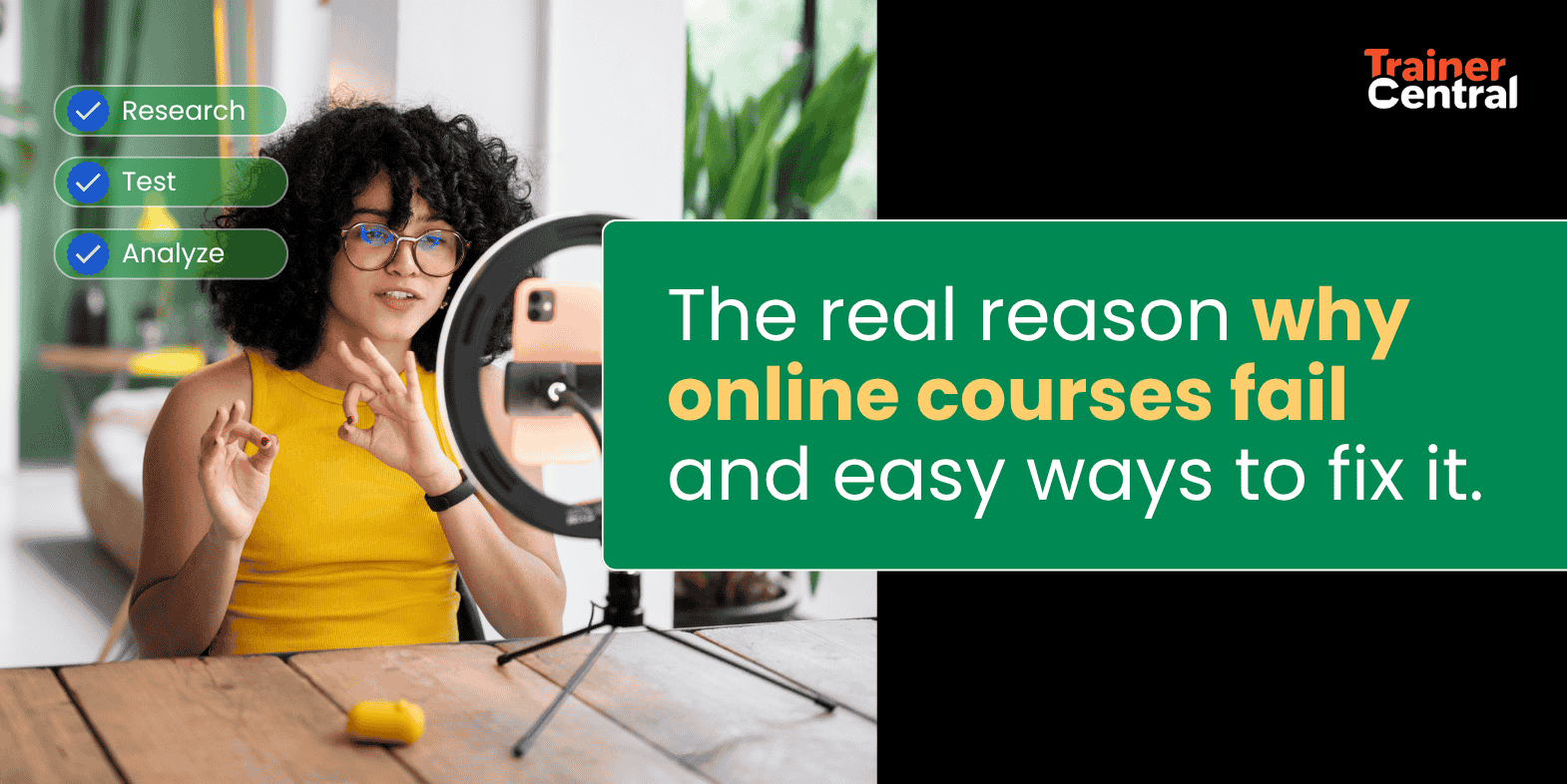- HOME
- Building a business
- How to sell your online course: The ultimate guide for trainers
How to sell your online course: The ultimate guide for trainers
- Last Updated : September 14, 2023
- 786 Views
- 9 Min Read

A well-defined sales process is important for your online training business. It helps to ensure that the potential users are consistently nurtured and effectively converted into paying customers. By having a clear and systematic approach to sales, your business can effectively communicate the value of its training services and address any potential objections that users may have.
Additionally, a well-defined sales process allows the business to track and measure the effectiveness of its sales efforts so that it can continuously improve and maximize its conversion rate.
What is the sales funnel?
A sales funnel is a pre-defined journey that a potential customer goes through when considering a purchase. The sales funnel is typically divided into stages, with the initial stage being the widest and representing the largest number of potential customers.
As the potential customer progresses through the funnel, the number of people at each stage typically decreases, with the final stage representing the smallest number of people who actually make a purchase.
The sales funnel is a useful tool for businesses as it helps them to understand the customer journey and identify areas where they can improve their sales process. By analyzing the data and trends at each stage of the funnel, you can optimize their sales efforts and maximize their conversion rates.
The sales funnel is broadly classified into three different sections:
- Top of the funnel
- Middle of the funnel
- Bottom of the funnel

Below, we talk about each part of the funnel and its function, including what marketing activities should be included.
Top of the funnel
The top of the sales funnel refers to the initial stages of the sales process, where potential customers are first introduced to a product or service and begin to learn about its features and benefits.
At this, the widest part of the funnel, the focus should be on generating interest and awareness with potential customers, not with a bunch of lead-generation activities necessarily but by using a mix of organic reach, community brand building, and paid outreach programs. Here are a few activities that can be done for this stage.
1. Create content for the learner community
Create engaging and informative content that showcases your expertise and teaching style. This could include blog posts, videos, and other forms of educational content that highlight your unique approach to teaching and learning.
This gives users a sense of confidence and a snippet of what they can expect from your courses. Even if the user is not ready to make a purchase, posting regular content to show off your course and increase community engagement will help with brand recall when they are ready to make a purchase.
Creating content is also a great method for lead generation, so if you’re providing an e-book or offering a free webinar, you can use lead-capture methodologies and build your potential lists. With that said, you can also try using cost-effective CRM for your business, which will help streamline lead capture and other nurturing activities.
2. Create an online presence
Build and design a website or social media presence that allows potential students to learn more about you and the services you offer. This should include detailed information about your background, qualifications, and teaching experience, as well as a clear and easy way for students to contact you to inquire about your services.
3. Become an influencer in the community
Brand building and being an influencer are both the same. By building a strong personal brand, your business can effectively communicate its mission, values, and services to potential clients, and create a lasting impression in the minds of its target audience.
There are several actions that an online coaching business can take to build a strong personal brand:
Leverage social media
Social media is a great medium to use to establish your brand. In general, social media algorithms are way too complicated. The best practice is to stay consistent and agile. Post value-adding content, share stories, reply to comments, drop messages on other posts, and, overall, be active on your social media channels. These activities may help your organic reach as well as play a branding “snowball” effect in your user community.

Network at tradeshows and conferences
Business networking is an art. When you attend tradeshows or conferences, you get the chance to meet like-minded entrepreneurs and have thoughtful discussions. Networking activities will also help you refine your business strategies, and improve collaborations. One of the best ways to get maximum attention at a trade show is to get a keynote session slot.
Seek out opportunities to collaborate
Working with other influencers is a great way to accelerate your brand reach. You can participate in podcasts or webinars, write guest blogs, or any other collaboration that will help both parties with other industry leaders and influencers, because this can help increase the visibility and credibility of your business.
4. Employ paid marketing activities
The biggest advantage of doing paid marketing promotions is that you can meticulously define your target audience and quantify the ROI easily. The medium in which you promote depends on your target audience. Start with a small budget, refine your messaging, analyze ad performance and traffic quality, and keep optimizing ads for the best performance.
In the top of the funnel, the key performance indicators you should monitor are reach, post interactions, and engagement. The marketing return during the initial stage tends to be minimal, but as your brands become recognizable and people are more ready to make purchases, then you can expect positive returns. Creating Facebook ads is an excellent place to start because they’re affordable and easy to set up.
Middle of the funnel
Users who reach the middle of the funnel will already be aware of your brand and offerings. Users may have signed up for your newsletter, subscribed to your social media handles, submitted a lead contact form, or just know your brand organically. The next step is to nurture these audiences into paying customers. So, how do you do it? You can continue your top-of-the-funnel activities with slightly different messaging and include new activities that will promote your users to take action.
In this stage, you will be able to segregate leads based on their intent and focus on hot leads and create a workflow for warm leads.
1. Nurturing and segmentation
When it comes to nurturing leads in the middle of the sales funnel, there are several things you can do to help move the audience closer to a purchase decision. One effective technique is to provide them with additional information and resources that will help them understand the value of your service, and how it can solve their specific problem. This can include things like case studies, product demos, webinars, and other educational materials.
Another important strategy is to stay in touch with your leads on a regular basis and provide them with personalized communication and support. This can include sending them relevant articles and blog posts, offering them special promotions or discounts, and inviting them to events or webinars where they can learn more about your product or service.
You can also try using marketing automation tools to help nurture your leads more effectively. These tools can help you segment your leads based on their specific interests and needs, and then send them targeted messages and offers that will be most relevant to them. This can help you build stronger relationships with your leads, and ultimately increase the chances that they will make a purchase.
2. Remarketing
Remarketing is a type of advertising that allows you to show ads to people who have previously visited your website or used your mobile app. This can be a highly effective way to bring people back to your site and convert them into customers.
There are several different strategies you can use for remarketing, including the following:
Custom audiences
This strategy allows you to create a specific audience of people who have previously interacted with your business and show them ads on various platforms, such as Facebook or Google.
Dynamic ads
These ads are personalized for individual users based on their previous interactions with your business. For example, if a user has viewed a specific product on your website, you can show them an ad for that same product when they visit another site.
Retargeting
This strategy allows you to show ads to people who have visited specific pages on your website. For example, if a user has visited your pricing page but didn't make a purchase, you can show them an ad with a special offer to encourage them to come back and make a purchase.
Overall, the key to a successful remarketing strategy is to provide personalized, relevant ads to your audience based on their previous interactions with your business. This can help increase brand awareness and drive conversions.
Bottom of the funnel
At this stage, the lead could have either already purchased the product or is on the verge of making the purchase. The two important aspects to be covered in this stage are sales closure and building relationships. Online training businesses are mostly subscription-based, so for a recurring business model to be successful you need to have an excellent relationship with your customers. A happy customer is an easy conversion to your next customer without an acquisition cost. They can also become your brand advocate and promote your courses to their circle.
1. Sales closures
Providing personalized support and assistance can help customers make a decision quickly. Some people prefer human intervention to gain confidence before making a purchase. This can include answering their questions, addressing any concerns they may have, and providing them with additional information.
To create a sense of urgency, you can offer special promotions or discounts to incentivize customers to make a purchase. This can include things like free trials, limited-time discounts, or bundle offers.
One of the best ways to connect with a customer is to empathize and listen to their aspirations. This can give a sense of companionship and removes the feeling of being sold to. You can highlight the benefits of your course and the value they’ll gain from it, and how the course will help them with their personal or professional aspirations. Using social proofs, such as learner testimonials, will also have a greater impact in purchase decisions.
2. Learner Retention
Transaction-focused businesses forget customers as soon as they make a purchase. For example, once you sell a pair of shoes, you don't need to build a relationship with the customer—which is perfect for that business type. But when it comes to subscription-based businesses, recurrence is everything. Returning customers will help you scale up and become profitable faster. You need to focus on providing the best possible customer experience, value for the customer’s money, and customer relations.

Here are a few strategies you can use to improve customer retention for a subscription-based business:
Provide excellent customer service
Make sure that your customers have a positive experience with your online training academy, and that their questions and concerns are addressed quickly and effectively. This will help to build trust and loyalty, and increase the chances that they’ll continue to enroll for additional courses.
Offer flexible subscription options
Give your learners the ability to choose the subscription plan that best meets their needs, and allow them to easily upgrade or downgrade as needed. This will help to ensure that they’re happy with their subscription, and that they feel like they’re getting value for their money.
Consistent content quality
Ensure that the content you provide is high-quality and engaging. One bad experience can hurt your brand reputation. The content quality should be consistent for all of your courses. This will help keep your learners engaged and interested, and increase the chances that they’ll continue with your academy.
Stay in touch with your learners
Regularly reach out to your learners to check in and review their learning experience. This can help identify any issues or concerns they may have, and give you the opportunity to address them before they lead to churn. It can also help build strong relationships and foster a sense of community with your learners. You can also gather learner testimonials for your marketing activities.
Wrapping up
The best way to start building your sales funnel is to study your target demography and work from the top of the funnel to the bottom. Make a list of activities for each stage and prioritize them based on your immediate business goals.


